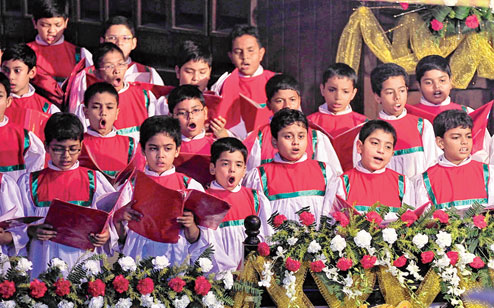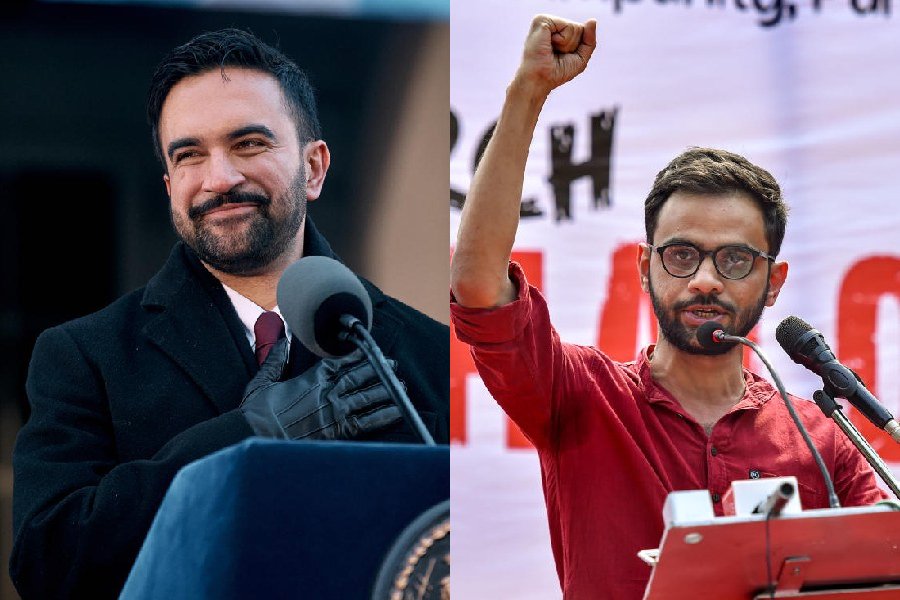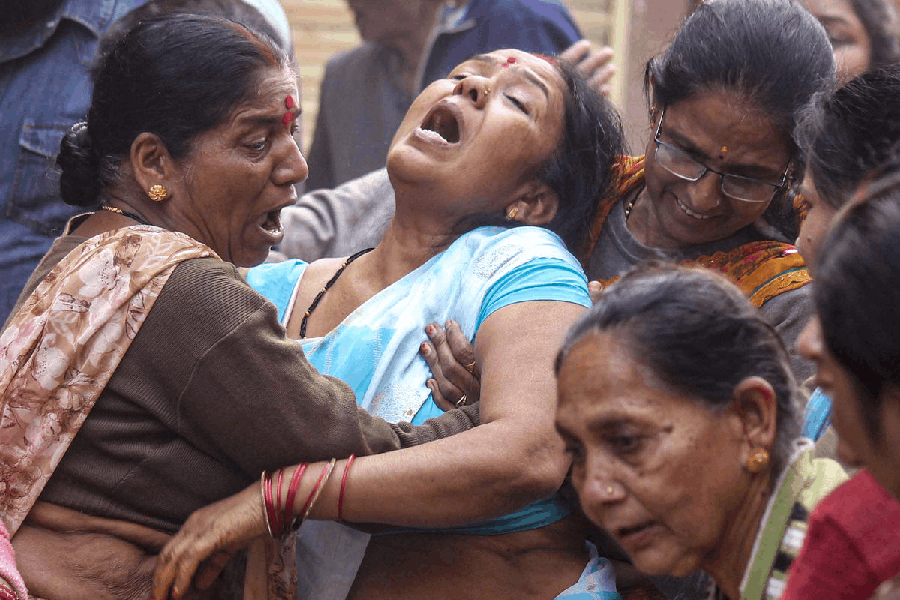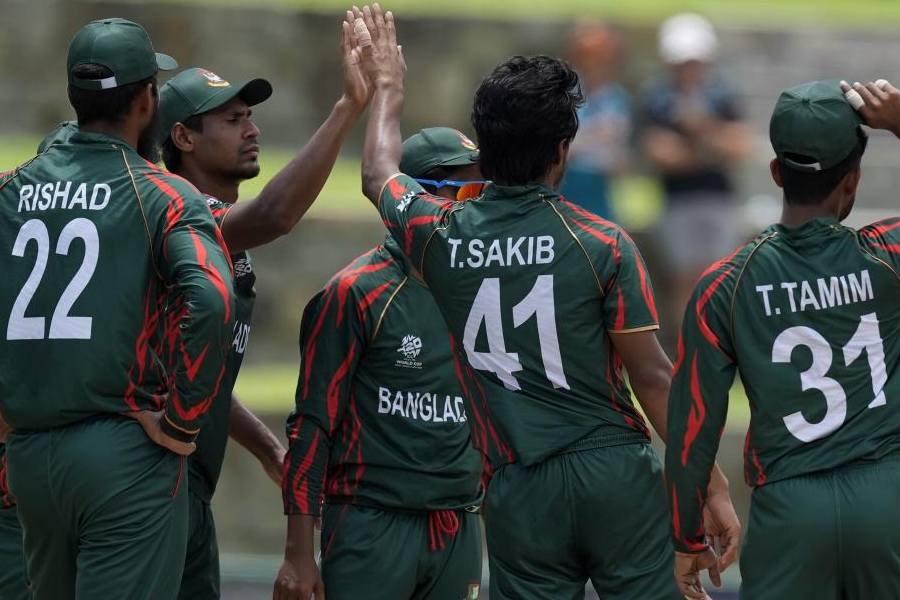 |
| The students of Calcutta Boys’ School usher in the Yuletide spirit at Thoburn Memorial Methodist Church. Picture by Arnab Mondal |
In the beginning, when the Europeans began to settle down in India, they had no choice but to shack up with the dark-skinned ladies, as it was too early in the day for the white ones to set foot on these alien shores. But once they did, shipfuls of Becky Sharps would sail across the seven seas, undaunted by the endless and often risky journey in search of prospective husbands. By the end of the 19th century, however, many white women had made India their second home.
Batteries of servants and maids waited on them hand and foot, food was cheap, and heat, notwithstanding, they polished off prodigious quantities of victuals. Many white women of those days have left behind accounts of life in India, and many of them recorded their circumstances with crayons, colours and paintbrushes, and later with cameras, when photography came to India. Kathleen Blechynden was one such memsahib, whose charming and highly informative Calcutta Past and Present was first published in 1905.
She made her intention quite clear in the preface. “My aim has not been to give any account of the great deeds by which the men of old Calcutta laid the foundations of the British Empire in the East, but rather to try and depict the lives they led, their daily cares and amusements, the wives and daughters who lightened their exile, the houses in which they dwelt, the servants who waited on them, the food they ate, the wines they drank, the scenes amid which they moved, the graves in which they laid their loved ones or sank themselves to rest.”
Blechynden covered the history of Calcutta from the days of Job Charnock and later Hastings, followed up by vivid descriptions of the social life and streets and houses of the colonial city, whose white quarters were tolerably clean and ordered, and the darkies were a necessary evil. Nisith Ranjan Ray, who was then secretary and curator of the Victoria Memorial, had published an edition of Blechynden’s book in 1978. The book was out of print for years. Now Aruna Prakashan has reprinted N.R. Ray’s edition. Highly recommended for education and entertainment.
Shooting stars
 |
They had all shot balloons in fairs but on this day they held a Hammerli AR20 that spit out 0.177mm pellets with bullseye precision. Employees of corporate firms dropped by at The Heritage School shooting range on a leisurely Saturday to try their hand at shooting. And training them was Olympian Joydeep Karmakar. The free workshop was a precursor to a corporate shooting contest to be held at the Salt Lake helipad ground from January 6 to 12.
“It’s so heavy,” came an exclamation from a huddle of novices. “The rifle weighs 4.5kg,” smiled a workshop official. Among those gathered, Prosenjit Dey, an accounts professional, had shot a .303 rifle in his NCC days in college. “We have an air rifle at home which my father won as a prize in East Germany.” With scores of 10, 9, 9, 8, 8 for the five rounds he shot, Dey was determined to make a case in office to send a team for the contest.
Three colleagues from a finance company had come inspired by the array of medals Indian shooters have won in the Olympics. “In China, I have seen shooting ranges in every school. Here at the age of 30, I am getting the first shot at the sport,” rued Nachiketa Chowdhury. Among those who dropped in was archer Rahul Banerjee. “Other than taking aim, everything else is different,” he said. Chess champion Dibyendu Barua enjoyed his stint so much that he was heard asking Karmakar how to train seriously. Would it be guns for the grandmaster now?
Christmas cantata
Calcutta Boys’ School celebrated the spirit of the season with Christmas Cantata at Thoburn Memorial Methodist Church. The service was presided over by retd. Rev. Dr Phillip S. Masih, Bishop, Lucknow Episcopal Area, MCI, and chairman of the CBS managing committee. The school choir sang carols such as Hark! The herald angels sing, Emmanuel, Carol of the bells, Silent Night, Holy Night and the like. Students dressed as Adam, Eve and the Devil enacted the fall of man from God’s grace and out of the Garden of Eden. The final Cantata Born in a Manger saw boys telling the story of the birth of Christ. Like principal Raja McGee said during the prayer service, the evening truly “reflected the splendour of Christ”.
Art college show
Around 400 students of Government College of Art and Craft organised their 149th exhibition to mark their 150th anniversary on the college campus. The exhibition was inaugurated by Ramananda Bandyopadhyay on December 23. It will be on till January 1. “More than 1000 artworks have been exhibited this year. It is broken up into eight sections including painting, sculpture, printmaking, ceramic, wood and leather textile and watercolour,” said Pramothesh Chandra, the head of department of painting of the college.
Children’s theatre
Rhythms & Rhymes, later registered as Children’s Little Theatre (CLT) or Shishu Rangmahal, presented its first public show at New Empire on May 11, 1952. CLT’s 61st Annual Festival (held from December 20-26) saw children aged four to 14 stage dance dramas and plays.
“We provide children a much-needed space to relax, use their instincts and talents. We have experts to guide and train children but there is no competition and all children privileged, underprivileged or challenged, are treated equally. This is why we never mention the names of our performers,” said Susmita Roy, a member of the governing body.
The festival was inaugurated by Jawhar Sircar, the president of CLT and Prasar Bharati CEO. “Our strength is that we have maintained a proven and established theatrical mode for six decades. We need to reach out and tell all children what CLT is about. As an open, vibrant institution, we’ll try out whatever technology appeals to them,” he said.
Contributed by Soumitra Das, Sebanti Sarkar, Sudeshna Banerjee & Trina Chaudhuri











